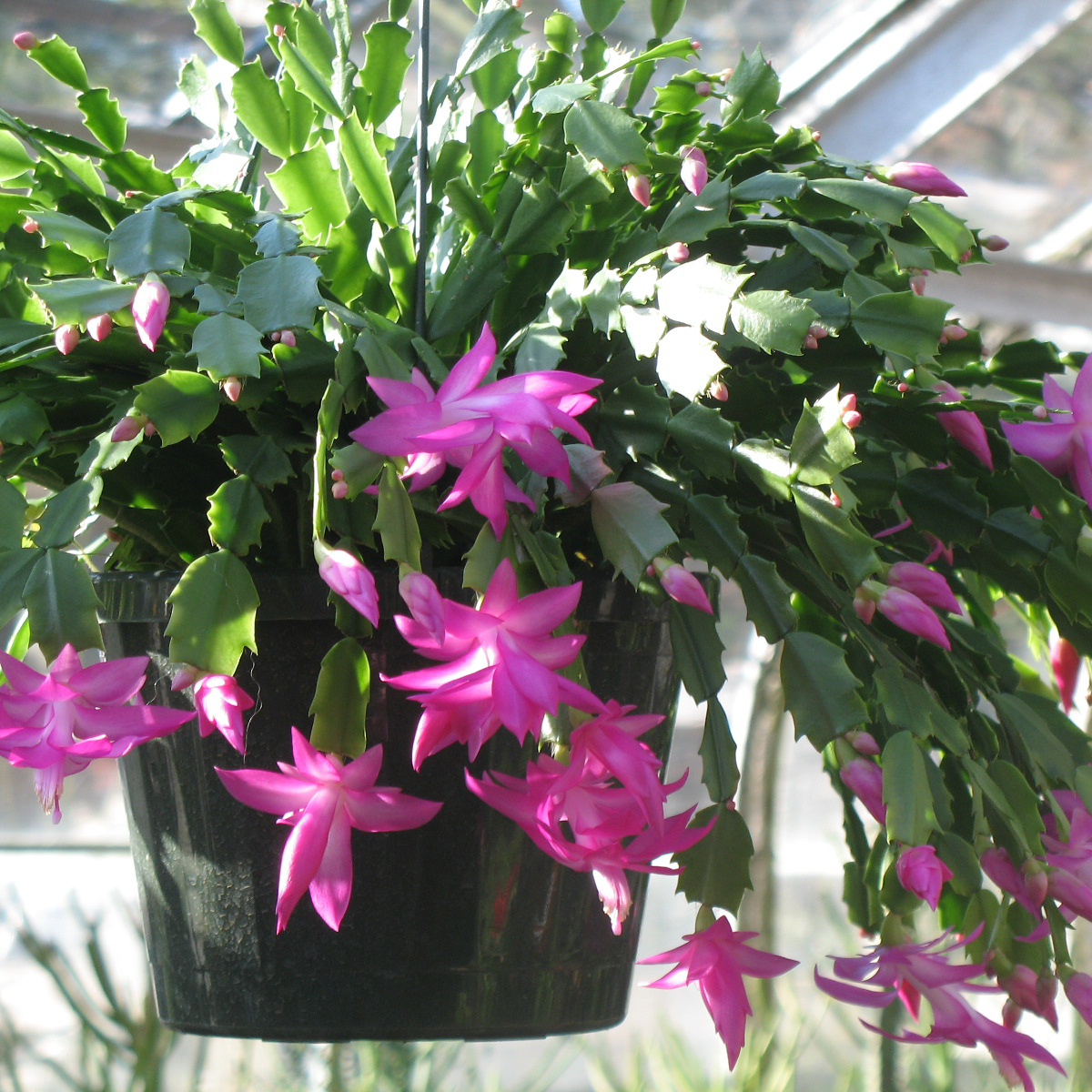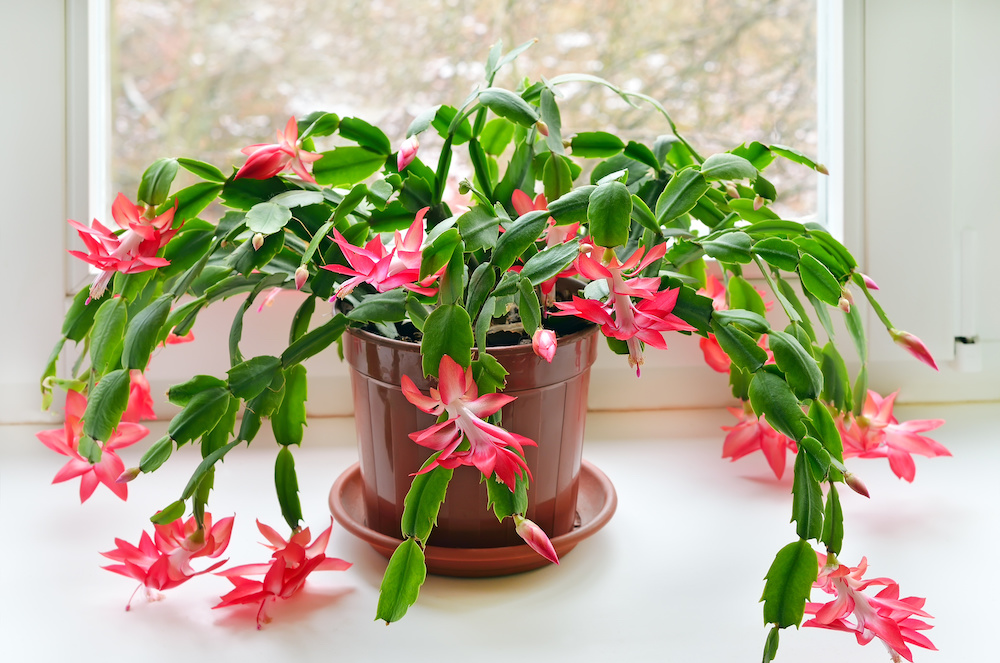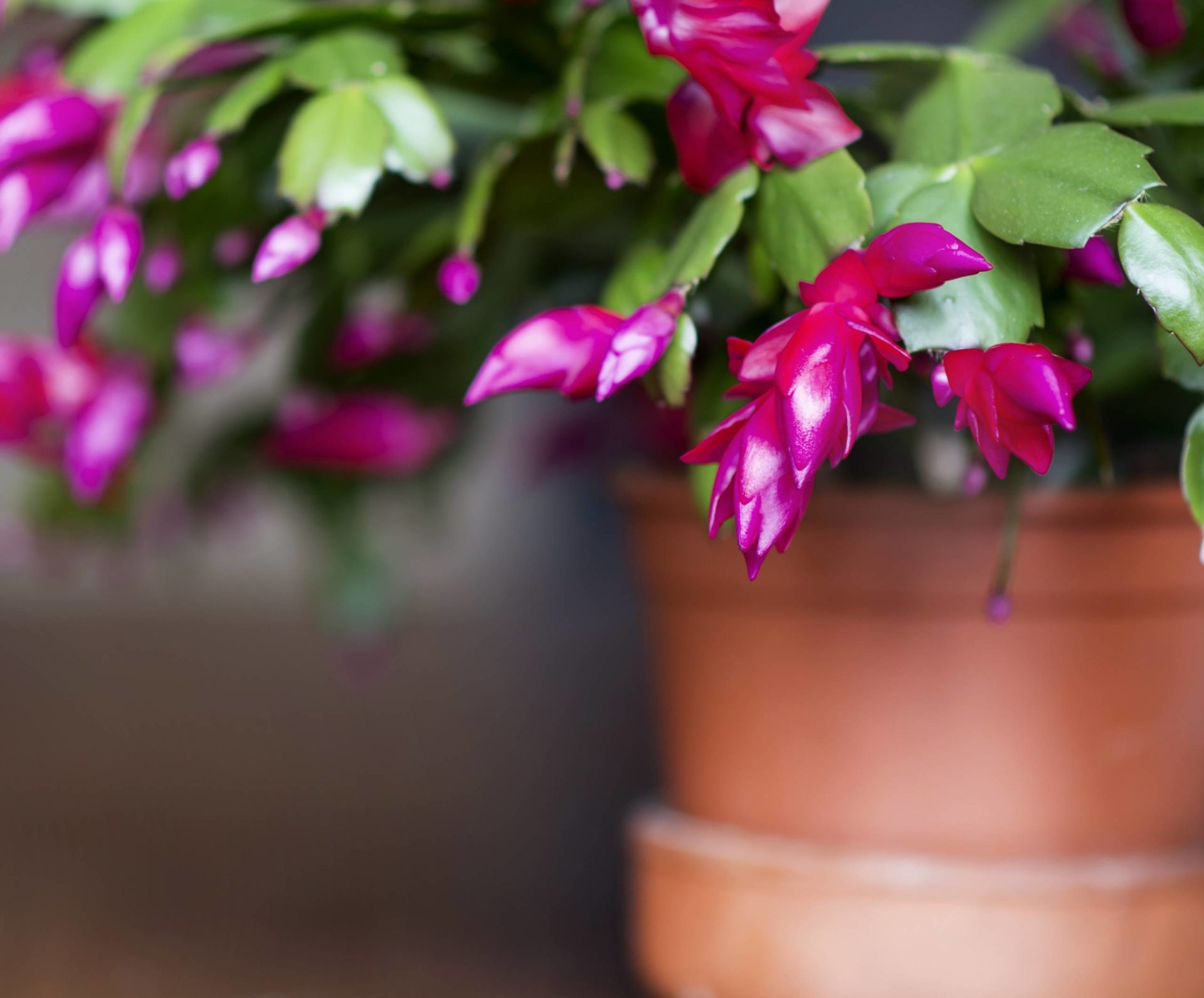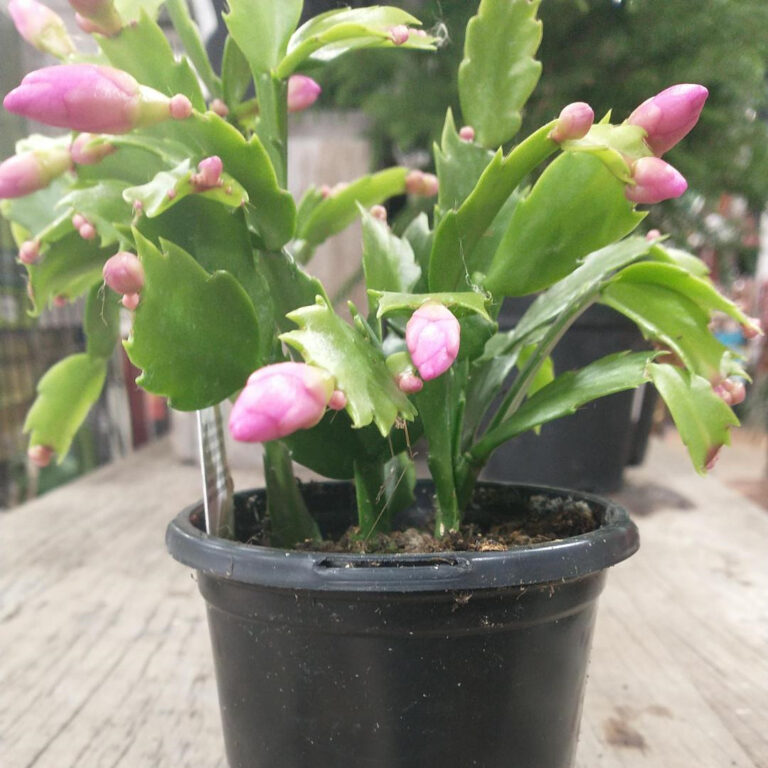
Holiday cactus, Thanksgiving, Christmas or Easter cactus, Zygocactus or Schlumbergera – what’s in a name? Potentially confusion, if the naming of these cacti is anything to go by, but fortunately when it comes to growing these colorful beauties, the care is very similar. To explain the myriad names these holiday plants go by requires a little taxonomical history.
During the early part of the nineteenth century explorers discovered these cacti growing in the Brazilian rainforests. Originally given the botanical name Epiphyllum, it was in 1858 that the genus was renamed Schlumbergera after the French cactus collector, Fédéric Schlumberger. Then this genus only contained S. russelliana, which at that point was called S. epiphylloides.

In 1890 Karl Schumann created the genus Zygocatus, into which Epiphyllum truncatum (today’s S. truncata) was placed. The name referenced the fact that this species has zygomorphic flowers, which in layman’s terms means they are symmetrical only in one plane: vertically. There continued to be taxonomical shuffling over the years with the result that Schlumbergera has become the accepted genus for Thanksgiving and Christmas cacti, along with a handful of other species
Christmas cactus is the common name given to both S. russelliana and a hybrid, S. x buckleyi. This hybrid was created in 1850 at Rollisson’s Nursery, England by William Buckley, who crossed S. truncata with S. russelliana (formerly S. bridgesii – those name changes again!). S. x buckleyi would bloom after the fall blooming S. truncata and before the winter blooming S. russelliana. As S. truncata blooms around November it became known as Thanksgiving cactus, while both S. russelliana and S. x buckleyi became known as Christmas cacti as they bloom in December.
However, Easter cactus is different, now being part of the genus Hatiora, and as its common name suggests, it blooms in spring. Originally named Epiphyllum russellianum var. gaertneri, it has moved genus and experienced several names, having also gone under the names of S. rhipsalidopsis, S. gaertneri and Rhipsalidopsis gaertneri, but is now known as H. gaertneri. If nothing else, the taxonomical contortions these cacti have experienced serves to illustrate that they have strong visual similarities.
Apart from the time of year that they bloom, there are other ways to tell them apart. For a start, Easter cacti only bloom once a year, and have distinct star-shaped flowers. Thanksgiving and Christmas cacti have more pendulous flowers, and can occasionally produce a second flush of flowers in the summer. The anthers of Christmas cacti have pink pollen while those of Thanksgiving cacti have yellow pollen. Thanksgiving cacti flowers have more swept-back petals and the flowers hang down more than Christmas cacti. All three cacti come in shades of red and pink, Easter cacti can also be orange, as can Thanksgiving, which also can be found in white and yellow. The leaf segments (phylloclades) also have variations in shape. Thanksgiving cactus is also known as crab cactus as its leaves end in two points like crab claws. True Christmas cacti do not have these points at the end, and are scalloped along the leaf, while in Easter cacti this scalloping is softened to just a slight rounding.

These cacti are actually epiphytes, found in Brazilian rainforests at an elevation of 3000-5000 feet, so they should not be treated in the same manner as desert cacti. As they grow on trees, they do not need much soil, and will in fact bloom better when a little pot-bound. They do, however, appreciate watering on a regular basis and need a free-draining soil to replicate their natural growing conditions. Temperatures where they grow drop no lower than 55-60ºF in winter, and daytime temperatures in the filtered light of the tree canopy generally reach 75-80ºF.
Knowing this about their natural environment makes success with these plants easier. They are sensitive to extremes of heat and cold, and sudden temperature changes can be a reason that they drop buds before they open. They do best when exposed to no more than a couple of hours of direct sun a day, and will appreciate spending the summer outdoors in a lightly shaded location. If they are exposed to too much light, the leaves will take on a rosy hue – move them somewhere shadier and they will revert to their normal green. They are not heavy feeders, but will benefit from receiving light fertilization with a general houseplant fertilizer during spring and summer.

Getting them to re-bloom each year is also easy once you understand what triggers flowering. Cool nighttime temperatures alone can be enough to trigger bud development, so having them outside until temperatures drop just below 50ºF in the fall can be all that is needed. However, especially for those plants kept indoors, the additional factor of lengthening nights is also needed to prompt bud development. Indoor grown cacti should be placed in a cool room in fall, and one in which they get to experience 12-14 hours of darkness. After about 6-8 weeks of this treatment buds should form on Thanksgiving and Christmas cacti, while Easter cacti need 8-12 weeks of such treatment. Having formed flowers, these cacti can be moved to where they can be enjoyed, and their blooms should last for 2-3 weeks.
So what will you find for sale in our stores this winter? Almost certainly the holiday cacti in bloom will be hybrids of Thanksgiving cactus, S. truncata, of which there are many. They offer the widest range of flower color, and are generally the sturdiest, thus making them preferred over Christmas cacti by growers. Bloom times of these Thanksgiving cacti can be staggered, so they can be in flower from November through December and beyond, after which it will be the turn of Easter cacti to take the stage a few months later. That is unless you live in the southern hemisphere, in which case H. gaertneri blooms around Christmas and S. truncata and S. russelliana bloom in May!
https://www.schlumbergera.net/history1/
https://hort.extension.wisc.edu/articles/holiday-cactus1/
https://worldofsucculents.com/thanksgiving-christmas-easter-cactus/







